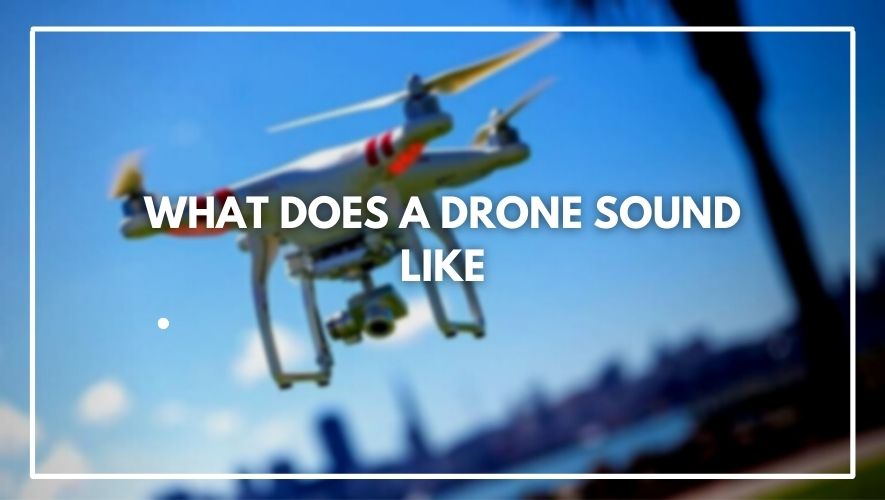What do drones sound like. Drones have become integral to various industries and recreational activities, from aerial photography and surveillance to package delivery and hobbyist flying. One aspect that often goes unnoticed is the sound drones produce while in flight. This comprehensive guide will delve into what drones sound like, why they make these sounds, and how they impact our environment and experiences.
The Sound of Drones: An Overview
Drones, or Unmanned Aerial Vehicles (UAVs), are known for their distinctive buzzing or whirring sound when in flight. This sound is primarily generated by the propulsion system, which typically includes electric motors and propellers. The exact sound of a drone can vary depending on its size, design, and purpose. When it comes to finding the drones that make sound then Veeniix V11MINI Drones will be a option.
Why Do Drones Make Noise?
Drones make noise primarily due to the following factors:
- Propellers: Propellers spinning generates airflow and lift, producing noise as air is rapidly displaced.
- Electric Motors: The electric motors that power drones create a buzzing sound as they operate.
- Airflow: The interaction between the drone’s body and the surrounding air can also produce sound, especially if the drone is moving quickly.
- Size and Design: Smaller drones tend to make less noise than larger ones, and the drone’s propellers and body design can influence the sound it produces.
The Types of Sounds Produced by Drones
Drones can produce several types of sounds, including:
- Buzzing: This is the most common sound associated with drones. It is typically a high-pitched, rapid buzzing or whirring noise caused by the spinning propellers.
- Humming: Some drones emit a lower-pitched humming sound, often related to the operation of their electric motors.
- Whining: A high-pitched whining sound may be heard in certain situations, such as when a drone is ascending rapidly.
- Rotor Noise: The sound of air rushing over the rotor blades can create a distinctive noise, especially in larger drones.
The Impact of Drone Sounds
The sounds produced by drones can have several impacts:
- Environmental Impact: Drones can disrupt natural environments and wildlife due to their noise. This disturbance can affect animals’ behavior, breeding patterns, and habitats.
- Privacy Concerns: Drone noise can alert people to their presence, raising privacy concerns when drones are used for surveillance or photography.
- Annoyance: The noise generated by drones can bother people in the vicinity, particularly in quiet or residential areas.
- Safety: In some cases, the noise of a drone can mask other important sounds, such as approaching emergency vehicles or warnings.
Ways to Reduce Drone Noise
Drone manufacturers and enthusiasts are continually working on ways to reduce the noise produced by drones. Some strategies include:
- Quieter Propeller Designs: Propeller designs that reduce air turbulence and noise can help make drones quieter.
- Brushless Motors: Brushless electric motors are quieter than brushed motors and are becoming more common in drone designs.
- Improved Aerodynamics: Enhanced drone body and rotor designs can reduce noise by minimizing air turbulence.
- Noise Barriers: Some drones have noise-dampening features or enclosures to reduce sound emissions.
- Flight Altitude: Flying drones at higher altitudes can reduce the impact of their noise on the ground.
FAQs
Do all drones sound the same?
No, the sound of a drone can vary significantly depending on its size, design, and propulsion system. Smaller drones tend to produce less noise.
Can I make my drone quieter?
While you can’t eliminate drone noise, you can reduce it by choosing quieter propellers, motors, and design modifications.
Are there regulations on drone noise?
Some countries and regions have regulations that address noise pollution from drones, especially in residential areas and near airports.
Conclusion
The sounds of drones are as diverse as the drones themselves, ranging from buzzing and humming to whining and rotor noise. While these sounds are inherent to drone technology, they can impact the environment, privacy, and safety. As drones continue to evolve, efforts to reduce their noise emissions are ongoing, aiming to strike a balance between the benefits of drone technology and minimizing its acoustic footprint. Understanding the sounds of drones and their impact can help us better navigate the world of UAVs while respecting the environment and those around us.

